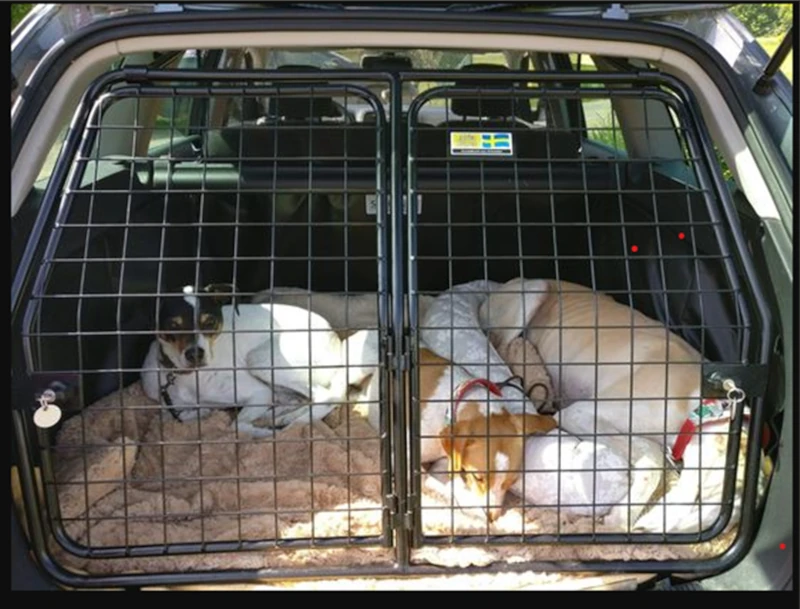- Home
- TRAVEL TIPS
- Should Dogs Travel in a Crate?
Should Dogs Travel in a Crate?
DigitalrezaidActivities, TRAVEL TIPS, Planning3 months ago5.5K Views

Traveling with your dog may be an exhilarating experience, especially if you’re heading to pet-friendly destinations like those on this list of where to travel in February USA. But ensuring their security and comfort is essential. One universal question that arises for dog owners is whether dogs should travel in a crate. The simple answer is yes, but there’s much more to consider.
In this article, we will explore why traveling in a crate may be advantageous and secure for dogs and their owners, and provide tips for making the journey as comfortable as possible.
The Safety Factor: Why Crate Training is Crucial for Dog Travel
When it comes to expectations touring by pickup, it’s critical to keep in mind that dogs, like humans, need guardianship with the understanding of a mishap or unexpected stop. Just as seat belts and airbags are created to keep human passengers secure, crates are expressly created to protect dogs during travel.
1. Reduces Distraction for the Driver:
Dogs that stray freely in the pickup can surely cause an interruption. They may jump into the front seat, crowd the driver, or cause added disturbances that can probably bring about accidents. A crate supports a secure and restrained room, keeping your dog safely working and allowing you to focus completely along the way.
2. Protects Your Dog During an Accident:
In the unlucky occurrence of a ride crash, an uncontrolled dog can become a projectile, leading to harm to both the dog and passengers. Crates are planned to supply an obstruction that minimizes movement, all the while preventing unexpected stops or impacts, helping cover your dog from harm. A flawless crate from solid stuff can help cushion and secure your dog, all the while in an accident.
3. Prevents Injuries During Sudden Stops:
Even if an accident doesn’t happen, unexpected braking or sharp turns can cause your dog to fall or get hurt. By keeping your dog securely in a crate, you ensure that they stay in a resistant, cautious position, reducing the risk of harm from these hasty activities.
4. Complies with Legal Requirements:
In some regions, traveling with a dog unrestrained in a vehicle is illegal. Many states or countries require dogs to be crated or properly restrained during travel to ensure both their safety and that of the driver. If you’re traveling across borders or to another state, ensure your dog’s vaccinations are up to date—find out how long travel vaccines last before your trip.
Benefits of Crating Your Dog While Traveling
Beyond security, crate offers various added benefits for both you and your dog, all the while travelling.

1. Comfort and Familiarity
Dogs are beasts of nature, and they frequently feel more secure when in the middle of well-known smells and objects. Traveling in a crate that they identify from home can help reduce stress, tension, and sickness in motor vehicles. It’s mainly to create an acceptable place for your dog by containing their favorite blanket, toy, or treat inside. This establishes a reliable, soft room where they feel calm.
2. Reduces Anxiety
Some dogs experience all the while on pickup rides, especially if they aren’t used to travelling. A crate can bring a sense of security and help them feel less accentuated. The enclosed room can mimic the impression of a cavern or secure section, helping your dog feel more easygoing and affluent all the while on the trip.
3. Prevents Mischief and Accidents
When your dog is free to stroll in the automobile, they might bite on the seats, lick the upholstery, or have accidents. A crate limits their skill to generate disorder or undertake undesirable presence. It further reduces the trend of your dog jumping out of the pickup when an entrance to the room is unlocked, which may be hazardous in unknown regions.
How to Choose the Right Crate for Your Dog
Choosing the right crate is essential for securing your dog’s safety and comfort. Here are a few determinants to consider when selecting a travel crate:

1. Size Matters
The crate should be large enough for your dog to stand, turn around, and lie down comfortably—but not so large that they slide around. A general rule is to choose a crate that is about 1.5 times the length of your dog from nose to tail. For guidance, refer to this handy article on how to measure a dog for a travel crate.
2. Material
Crates show up with different materials, containing plastic, mineral, and cloth. Plastic crates are mainly more encircled and offer better care, making them a well-known choice for pickup travel. Metal crates, in another way, provide more fresh air but may not guard against all the unexpected activities or collisions. Soft-put paint or finish on material crates is less sturdy and should be avoided for pickup travel, as they don’t offer the same level of security.
3. Ventilation and Visibility
Your dog concedes the possibility of having enough fresh air to prevent overheating, specifically on long trips. Look for crates with enough air dents or slats on the edges and front. Additionally, a few dogs may favor crates with a clear view of their environment, while the remainder may feel safer in more enclosed zones. Choose based on your dog’s choices.
4. Durability
Choose a crate from sturdy materials, especially if you’ll be transporting it long distances. The crate is able to withstand the rigors of travel outside without breaking or becoming impaired. Make sure the crate’s latches and doors are secure and cannot be unlocked by your dog.
Crating Tips for a Smooth Journey
Even with the right crate, it’s important to contemplate various tips to create your dog’s journey more pleasing and stress-free.
1. Introduce Your Dog to the Crate Beforehand
If your dog isn’t used to being in a crate, it’s best to get them used to it before taking a long trip. Start by locating the crate in your home and allowing your dog to survey it at their own pace. Offer helpful support, accompanying treats, and praise when your dog enters the crate. This can help halt tension all along the trip.
2. Take Breaks during Long Trips
For more interminable journeys, be sure to stop and take breaks every couple of hours. Let your dog stretch their limbs, expel feces, and drink water. This will help the ruling class stay affluent and decrease the risk of discontent along the trip.
3. Make the Crate Comfortable
Bring your dog’s favorite blanket or cuddle up to help create the crate feel more like home. Consider locating a chilling mat inside the crate if transported in warm weather or a warm bed if it’s cold. This guarantees your dog’s debris is easily cleaned during the whole trip.
4. Hydration and Snacks
Offer your dog water daily to keep them hydrated, especially on long trips. You can too, cause a few of their favorite refreshments to keep them compensated all along the ride. However, do not feed your dog a complete meal on the way to travel, as it can cause sickness in a motor vehicle.
Conclusion: Should Dogs Travel in a Crate?
In conclusion, touring in a crate is one of the most realistic and most appropriate methods to transport your dog. Not only does it maintain your dog secure and shielded from a mishap, but it also reduces stress and tension while travelling. By selecting the right crate and following natural tips, you can create your dog’s journey pleasing and stress-free.
Whether you’re journeying on a short lane trip or a long-distance trip, crate training your dog guarantees that both you and your pet can enjoy a cautious and wealthy ride.



















